The Canon R and Sony A7 III are two popular and capable full-frame cameras. Each presents us with incredible unique features that we can’t overlook. But when we have to choose between them, which camera is better? Which one should you choose? If you find yourself in this situation, you shouldn’t worry; you are not alone. The Sony vs. Canon debate has been around for a while, and it doesn’t look like it will stop any time soon.
Both Canon and Sony are the top global leaders in manufacturing cameras, constantly topping the list of the best camera brands. While both have earned their place in the market, sometimes we have to make decisions no matter how tough. Hence, the reason we are here today.
So, for the Canon R vs Sony A7 III debate, we took time to assess both cameras, compare their features, similarities, and differences to the tiniest details delivering our ultimate verdict. Let’s get started.

Why Sony A7III?
We picked the Sony Alpha A7 III on the basis of its performance and features. The Sony A7 III stands out for its better image, compactness, tons of features, and value for money. Don’t get us wrong, the Canon EOS R is, by all means, an excellent camera, but when it goes head-to-head with the Sony A7 III, most of the criteria put Sony ahead.
All in all, we agree that both the Canon EOS R and the Sony A7 III offer tons of incredible features and are similar on multiple fronts. We will look at each of these later in the article, but first, let’s have a quick summary.
The Canon EOS R Quick Overview

Specifications and Features
- Mirrorless SLR camera with manual focus lens and full-frame CMOS sensor
- 30-megapixel resolution, ISO sensitivity ranging from 50 to 102,400, and 5,655 focus points
- Auto-Focus touch, continuous, live view, tracking, and face, phase, and contrast-detection
- MPEG-4 and H.264 video
- The Canon RF lens mount is compatible with about 26 lenses
- 2-inch fully articulating touch screen
- Electronic viewfinder with 100% coverage
- 1/8000s maximum mechanical shutter with 8 fps continuous shooting speed
- There are microphone and headphone ports, as well as built-in wireless connectivity
- 370 shots per full charge
- Timelapse recording
- 5 color depth
- 46 pounds with dimensions of 36 x 24 mm
The Sony Alpha A7 III Quick Overview

Specifications and Features
- SLR- style mirrorless camera with BSI full-frame CMOS sensor and manual focus lens
- 24 megapixels, ISO sensitivity ranging from 50 to 204,800, and 693 focus points
- Raw files support
- AF touch, continuous, tracking, live view, and face, phase, and contrast-detection
- MPEG-4, AVCHD, XAVC S, and H.264 video format
- Sony E lens mount compatible with 153 lenses
- 3-inch tilting touch screen
- Electronic viewfinder with 100% coverage and 0.78x magnification
- The maximum mechanical shutter speed is 1/8000s
- External flash and sensor-shift image stabilization are built-in
- 10 frames per second continuous shooting and 4K video resolution
- Microphone and headphone ports with built-in wireless connectivity
- 610 shots per full battery charge
- 8-bit color depth
- 44 pounds and 35.8 x 23.8 mm.
About Canon Full Frame Mirrorless Camera [EOS R]
Launched in September 2018, the Canon R debuted as Canon’s only full-frame camera. Although its launch was filled with various limitations, all took a turn. The brand stepped up in 2020 with impressive features such as firmware improvements and a spectacular RF lens lineup. All these at a lower price.
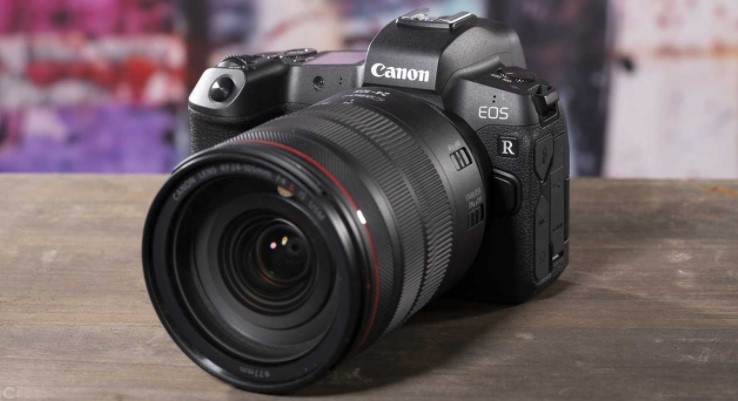
The Canon R is designed to offer you the ultimate shooting experience. It is a compelling and capable camera choice for both videographers or photographers. We particularly love its excellent vlogging features, which we’ll get to in a few.
The Canon EOS R features a full-frame 30.3-megapixel sensor and DIGIC 8 image processor, which is impressive, and you can be sure of sharper images.
The camera produces stunning files with beautiful colors and noise performance. This also means improved performance even in a low-light environment and narrow depth of field to let your subject stand out. The two features combine to offer you a wide sensitivity range of up to native ISO 40000.
The Canon camera also offers a decent shooting speed of 8 fps. Although it is not much, the shooting speed is a tremendous improvement for Canon standards, and enough if you are looking to capture wildlife, sports, or any other form of action.
The camera also stands out for its Dual Pixel CMOS Autofocus feature. We love the AF technology because it uses every pixel in the imaging sensor to detect focus. It is also an excellent choice when you want to capture moments, thanks to the fast-focusing feature that lets you maintain focus on moving objects.
You also get 5,655 manually selectable AF points for quicker and more accurate focus during action shots and superior focusing when working in low-light conditions. They cover about 88 percent of the frame horizontally and offer full coverage vertically.
The Canon R supports UHD 4K recording at 30 fps. If you downgrade to full HD 1080p, you can shoot at 60 fps, and when you want slow-motion playback, HD 720p, you can shoot 120 fps. Its 3.15-inch 2.1m-dot touch LCD screen makes it straightforward to operate, thus convenient for enthusiasts.
If you’re a blogger or want a camera that lets you shoot stills from uncomfortable positions, you will appreciate the flip-out rear screen that also fully articulates. Another fantastic feature for videographers is the included microphone and headphone ports that ensure quality video sound.
The higher resolution inbuilt electronic viewfinder with 3.69 million dots also offers you sharper and brighter viewing to top up the LCD. Bluetooth connectivity means you can connect your camera to your smartphone or other devices hassle-free, remote control, or easily share files. Thanks to the built-in Wi-Fi, you also get to share your photos and videos on cloud services instantly.
Despite the few lens compatibility options for Canon EOS during its launch, the last three years have seen a significant improvement. The Canon camera allows you to convert your camera to a webcam using only a USB cable, perfect for online video conferencing and live streaming with windows. The camera offers you compatibility with about 26 RF lenses. You can be sure to find one that best suits your shooting needs.
Suppose you are into outdoor photography, or you shoot in extreme conditions. In that case, you will love that you can bring along your camera without worrying about the elements thanks to its dust and water-resistant feature. The Canon EOS R also features a magnesium alloy body construction and polycarbonate with glass fiber parts, so you can use your camera worry-free, knowing it can handle the everyday bumps.
User reviews reveal that some love its slightly larger body as it offers them a better grip when it comes to the camera’s size. However, other photographers find it bulky, especially users looking for the compactness offered by mirrorless cameras.
You’ll find it straightforward to operate the Canon R. To add to the 3-inch rear LCD screen, it also has an EV dial at the top, C1 and C2 buttons, a mode dial, an off-and-on switch, and an easy-to-access command dial.
The Canon R camera also opens up multiple opportunities for creativity with its unique accessories. It features a mount adapter EF-EOS R that ensures a broader range of lens compatibility for increased quality and performance. With a control ring mount adapter, you get to enjoy better control and customization instead of fumbling with the oddly placed buttons on the camera. You will also love the Canon’s Speedlite flash range that lets you experiment with multiple lighting options for creative shots.
On the downside, the Canon R also lacks in various fronts. It lacks in-body image stabilization meaning you will have to purchase a lens with an optical stabilization feature. This is primarily a letdown for videographers. Luckily, the market currently offers around 26 lenses with visual image stabilization features to pair with the Canon RF.
The camera also only comes with one SD slot. While this may be negligible for some users, as a photographer, it is always great to know you have an extra card slot to easily swap when your first card is full or as a backup for when the primary card fails.
About Sony Alpha A7 III Full-Frame Mirrorless Camera
The Sony A7 series offers impressive and versatile features, thus it’s an excellent entry camera for photographers looking to upgrade to a compact full-frame camera. The Sony A7 III was launched in February 2018. It offers a perfect mix of shooting speed, higher resolution, video capabilities, and AF features to outperform its predecessor, A7 II, on various fronts.
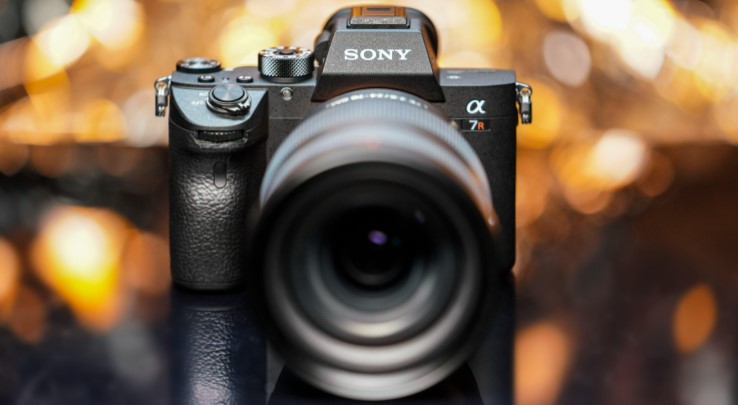
The Sony A7 III features a 24MP sensor resolution, producing 6000 x 4000-pixel images. Although the resolution sensor is lower than Canon R, the camera’s BSI (Back Side Illumination) full-frame sensors won’t let you down. It performs perfectly in all light conditions and also provides an incredible range. The dynamic range and low light sensitivity sensors mean better performance even in low light conditions. All these high-quality imaging capabilities ensure the camera will suit most of your shooting needs.
You will also love the UHD 4K video feature that lets you record professional, smooth 4K videos at a shooting speed of 30 fps and slow-motion shots at 1080p. If you are willing to downgrade to full HD, Sony will deliver a shooting speed of up to 120 fps. Plus, the camera supports timelapse shots. You can automatically shoot images at set intervals and later combine them into a video. You’ll love that the Sony camera offers an incredible 6K resolution for timelapse videos.
In addition, the 5-axis stabilization on Sony A7 III compensates for five types of camera shakes to ensure your shots are steady. You’ll love the camera’s robust lens compatibility, as you can pair your camera with up to 153 lenses to experiment without worrying about blurry shots.
It comes with two focus points that combine to recognize and track subjects. The 693 phase-detection points cover approximately 93 percent of the image area, while the 425 contrast points are mostly concentrated in the frame’s center.
The camera’s face detection and Sony’s Eye AF system are perfect for shooting portraits. It’s also an excellent function when you’re shooting continuously. Your subjects can change their poses as needed, and you won’t have to stress about losing your model’s eye focus.
Another feature that makes the Sony A7 III stand out is its crop factor when shooting 4K footage. With 10 fps bursts and an autofocus system, the camera comes in handy when shooting fast objects – you won’t miss a moment! Thanks to this feature, the Sony A7III is an excellent pick when looking into sports and wildlife photography.
In addition, the Sony A7 III supports silent shooting at up to 10 fps with AF tracking, so you can continue without disturbing the subject for perfect shots. The extended ISO 100-51200 range and noise reduction technologies ensure that you shoot images with more details and reduced noise.
The Sony A7 III stands out for its enhanced color reproduction performance. You’ll enjoy that your subject’s color is natural to give you a real-life feel. No dealing with unrealistic skin tones, landscapes, and hues.
Sony A7III comes with two SD card slots for your peace of mind and convenience. When shooting many images or long videos, you can seamlessly switch to recording the shots in the second memory slot without missing moments when swapping the cards. Alternatively, you could use the second SD slot for backup, that way, you won’t lose your work due to memory card failure or loss.
Sony A7 III also allows you to customize the menu to suit the settings you frequently use for ease and quick access. You won’t have to peruse through tons of options to select the setting you require.
Its screen tilts up and down to offer multiple shooting angle options. However, it does not wing out of the camera’s body, meaning it limits you when you want to record a video while monitoring the framing. This is especially a letdown for vloggers. However, videographers will appreciate the included 3.5 mm microphone input and 3.5 mm headphone jack. This means improved sound quality and preventing any bleed.
When it comes to the camera’s battery use, you can be sure to enjoy a longer battery life. You benefit from up to 710 shots when shooting stills and up to 210 minutes of usage when shooting videos or during continuous shooting.
The camera comes with a rechargeable battery, AC adapter, a shoulder strap to make it easy for you to carry the camera from one place to another, and a body cap for enhanced protection of your camera body from moisture and dust during storage.
The package also comes with a micro-USB cable, a shoe cap for extra protection from damage, and an eyepiece cup to prevent excess light from entering your camera’s viewfinder and make it more comfortable to use.
The Sony Alpha A7 III camera also supports NFC, Bluetooth, and Wi-Fi connectivity to add to wired connectivity. This feature allows you to connect your camera to your smartphone as a wireless remote control. You can also connect the camera to other Android or iOS devices to directly transfer your videos and images to share with other users on social media or your YouTube channel.
Similarities between Canon EOS R and Sony A7 III
Canon EOS R and Sony A7 III have a ton of similarities that make it tricky to settle for one. We’ll look at more details for each and how they compare.
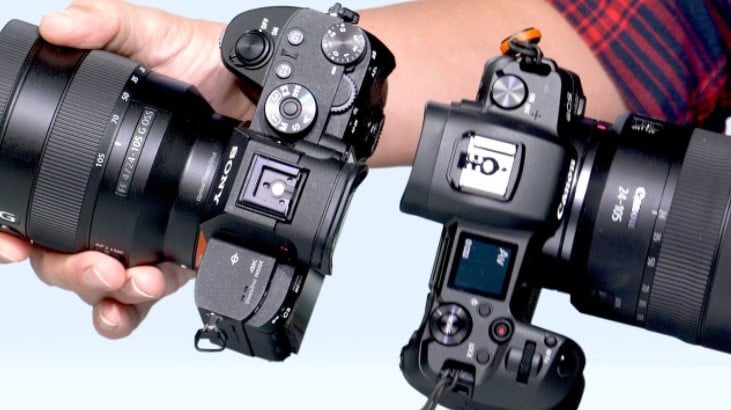
Sensor:
We also love that Canon R and Sony A7 III feature incredible sensor resolution to suit most shooting conditions. Canon’s 30.3MP full-frame sensor ensures improved performance in low-light situations and lets your subject stand out. Sony A7 III, on the other hand, features a 24.2 MP full-frame BSI CMOS sensor that provides an incredible dynamic range and outstanding performance in all light conditions.
Electronic Viewfinder:
Additionally, both cameras come with an electronic viewfinder instead of an optical viewfinder to offer users better framing and control. Canon EOS R has a 3.69M dot EVF that is large, fast, responsive, and sharp. Sony’s 2.36M dot EVF doesn’t offer the highest resolution, but it is big and clear enough for most photographers. Canon’s viewfinder magnification is 0.76x while Sony’s is 0.78x. Both Canon R and Sony A 7 III offer you dual options when it comes to view-screens. You can either use the rear LCD screen or the Electronic Viewfinder. Although Canon may seem like a winner here, thanks to its impressive 30.3 MP resolution, the best option for shooting comes down to your preference and shooting needs.
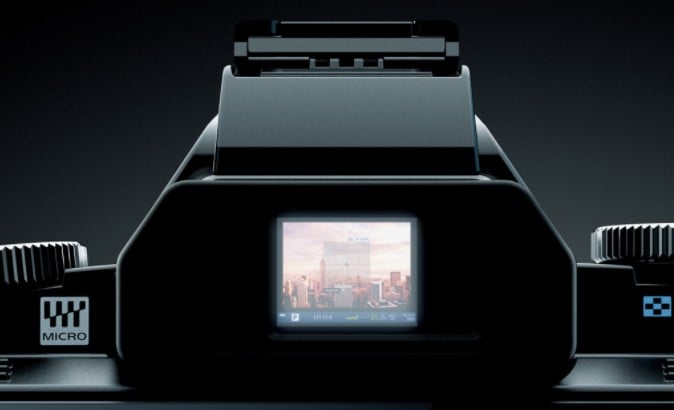
Autofocus Function:
Canon R comes with a dual pixel AF with an incredible 5,655 AF positions. Sony offers 693-point phase-detection autofocus and 425-point contrast-detection autofocus. Both provide impressive coverage, with the Canon camera covering 88 percent horizontally and 100 percent vertically and the Sony camera covering 93 percent of the image. The two cameras also feature a face detection focus for convenience when shooting portrait photos.
RAW Support:
Both cameras offer RAW support features. This means you can shoot high-quality raw images to edit later. If you wonder what we mean by raw, these are shots that look like the ones you took with your camera. They are uncompressed and unprocessed, thus allowing photographers to play with their creativity during editing. Pros prefer editing raw files as they do not limit their imagination.
Connectivity:
In terms of connectivity, both cameras feature wireless connectivity for your convenience. Both feature an HDMI output and allow Bluetooth connectivity to pair with devices such as your phone for instant sharing of photos and videos. The feature also enables you to operate your camera remotely. The cameras also come with an inbuilt Wi-Fi feature, meaning you can instantly share your shots via cloud services hassle-free.
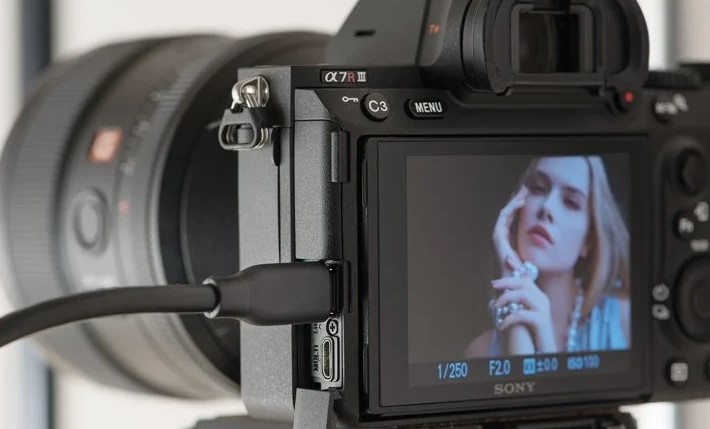
Webcam:
We also love that you can easily convert both cameras to a webcam when you want to join a video conference or live stream via Windows. All you need is a USB cable for the Canon camera, and you are good to go. For Sony, you will need a software update.
4K Resolution:
Both the Canon R and the Sony A7 III shoot great quality videos. Thanks to the 4K feature. They also come with a microphone port for high-quality sound during video recording, making them perfect for videographers. The headphone port on both cameras also makes video shoots hassle-free. You will also love that both cameras support timelapse recording.
Size and Weight:
When it comes to size and weight, the cameras are almost the same. Canon’s dimension is 36 by 24 mm and weighs 1.46 pounds, whereas Sony Alpha A7 III’s is 35.8 by 23.8 mm, at 1.44 pounds. Both offer almost the same level of compatibility, making them easy to carry on the go to capture moments during your adventures.
Lens Compatibility:
Both the Canon R and the Sony A7 III also stand out for their excellent lens compatibility, giving you options. Canon comes with a Canon RF lens mount that is compatible with about 26 native lenses. On the other hand, the Sony A7 III has a Sony E lens mount that lets you mount about 153 available lenses. The Sony camera also has a sensor-based image stabilization feature, meaning all these lenses will be stabilized when you pair them with your Sony unit. You can use both cameras in multiple weather conditions thanks to the included environment sealing, which makes them water and dust-resistant.
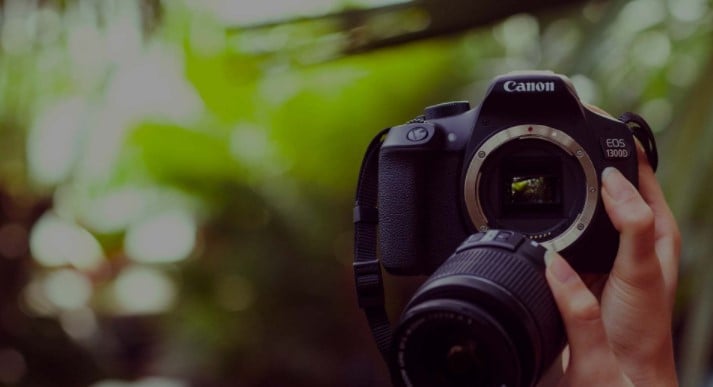
Screen:
The Canon R has an entirely flipped and rotating screen that makes it perfect for vloggers. The Sony Alpha A7 III screen also tilts up and down to offer multiple shooting angles. The display for both cameras is a touchscreen, thus intuitive and straightforward to operate.
Continuous Shooting Speed:
For both the Canon EOS R and the Sony A7 III, you get to enjoy a decent continuous shooting speed of 8 fps and 10 fps, respectively. Therefore, both are perfect when taking multiple shots as they let you capture every moment that matters.
Anti-flicker:
The anti-flicker feature on both cameras maintains image sharpness under flickering light by reducing uneven color and exposure. If you love to have complete control of your camera, you will love that both offer manual focus lenses.
Full-frame mirrorless cameras:
It might seem obvious, but it would also be great to point out that both are full-frame mirrorless cameras. The mirrorless feature lets you enjoy better image stabilization for quality, less shaky images. They are also smaller compared to their DSLR counterparts, meaning you get more compact units with both without compromising on performance. Another advantage of mirrorless cameras is that you can swiftly switch from shooting stills to videos for better quality.
Battery Life:
Depending on the usage, both cameras offer excellent battery performance. You can take up to 370 shots with the Canon EOS R and 610 shots using the Sony A7 III. While the Sony Alpha camera offers better battery life for extended use, both will serve you well, especially for beginners.
Built-in Flash:
A downside for both cameras is that none has a built-in flash. Luckily, each comes with an external flash and shoe to give you the option of extra lighting when shooting in a dimly lit environment such as indoor or night photography. Both cameras also lack GPS features.
Differences Between Canon EOS R and Sony A7 III
Just like their similarities, the Canon R and the Sony A7 III have many differences that set each apart.


Image Stabilization:
The Sony A7 III comes with inbuilt image stabilization, which is powerful enough to offer stabilization when using a range of available lenses. Canon doesn’t have inbuilt image stabilization, which limits you to in-lens image stabilization. While most compatible lenses will work fine, the lack of this feature in the Canon R is a deal-breaker for most users, putting Sony ahead.
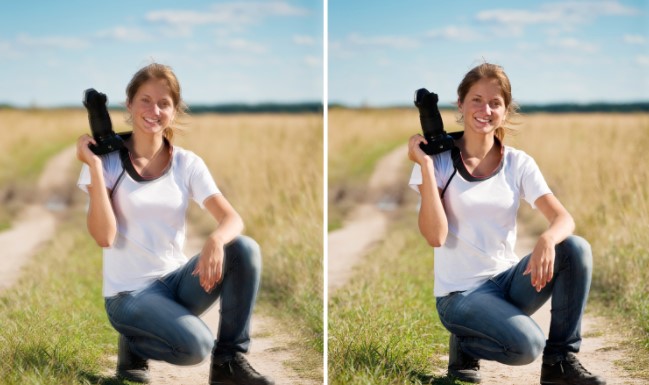
Low Light Conditions:
In terms of low-light performance, both cameras claim spots at the top. However, Sony’s lower resolution frame sensor makes it a better choice when shooting in dim light without compromising image quality. You’ll appreciate Sony’s fast focusing in low light with increased sensitivity from -1EV to -3EV.
Battery Life:
Sony also outshines Canon in terms of battery life, especially for pro-photographers. While both offer enough to fit users based on usage, the Canon EOS R offers 370 shots per full charge, while Sony boasts about 610 shots per full charge. This is especially important for professionals or when shooting long sessions, as you won’t need to charge your camera as often.
SD Card Slot:
While both cameras use UHS-II SD cards, the cameras differ in card slot availability. The Canon R comes with only one memory card slot, while Sony offers dual slots. This might not be an absolute deal-breaker, but a dual-slot is better for peace of mind. No one wants to find out they have lost all their images due to a faulty card when they could back them up or miss moments when switching between memory cards when one is full.
Display Compatibility:
Another contrast that makes one of the two cameras stand out is the usability of the display screen. The Canon menu system makes it easier for users to access the camera’s software and navigate multiple settings. However, users have complained of Sony’s structure being too dense, thus tricky and confusing to navigate. Sony A7 III has tried to improve this feature with its intelligent recall function to save your most frequent settings for accessibility. Although the customization feature comes in handy, the Canon R beats the Sony Alpha A7 III on this front.
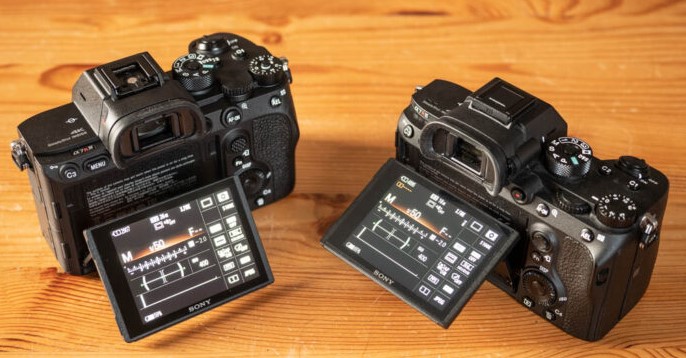
Sensor:
Canon is also the better option in terms of maximum sensor resolution. While both cameras have impressive resolutions, Canon’s 30.3 MP means 25 percent more pixels than the Sony A7 III. However, consider that factors such as low pass filter, optical elements, sensor technology, and more also play a crucial role in an image’s resolution. The Canon EOS R has 565 more than the Sony (693) model in terms of focus points. The camera also offers you 0.2 extra inches of the screen display.
Screen Resolution:
Canon R is also a winner when comparing the EOS R and Sony’s LCD screen resolution. Its touch LCD screen has a resolution that is 127 percent higher than Sony’s 922,000 dots. Its viewfinder also offers a higher resolution, 3.69 M, than Sony’s 2.36 dot EVF. The Canon EOS R also features a fully articulating screen, supporting more extreme shooting conditions than the Sony A7 III.
Canon EOS R vs. Sony A7 III – Which One Should You Go For?
Back to our initial quest – Canon EOS R vs. Sony A7 III: Which one should you pick? After the analysis, we’re happy to declare the Sony Alpha A7 III the winner. Luckily, with just 6 months between their launch date, there’s a level playing field for both cameras in terms of technological advancements and expectations.
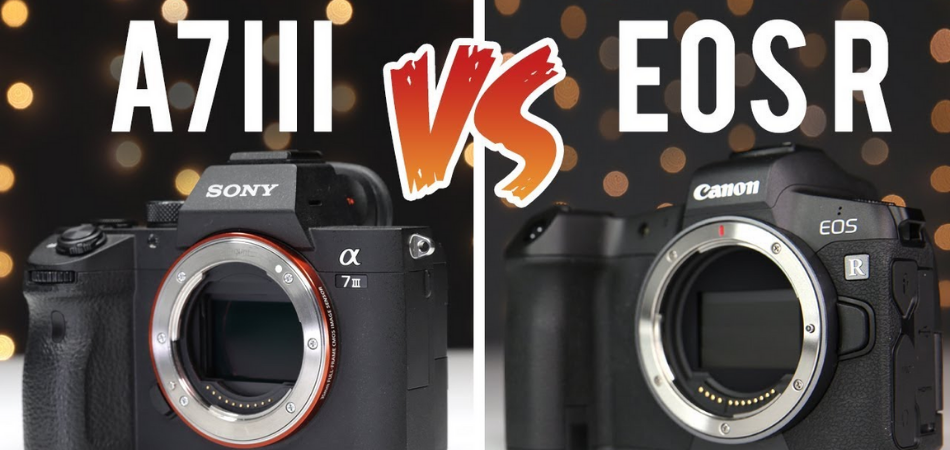
We’ll briefly highlight the outstanding features of the Sony Alpha camera to show you why we recommend it.
Image Quality
Sony A7 III stands out for its incredible image stabilization and lens compatibility. The camera comes with inbuilt image stabilization for sharper images with longer focal lengths and slow shutter speeds. Plus, it’s compatible with a wide range of lenses to offer stabilization when using these lenses.
Slot for Storage
The Sony A7 III comes with two SD slots compared to the single one offered by Canon. This means you can use your camera worry-free, knowing you have an extra memory card to easily swap when one is full or for backup to avoid losing your work when one card fails.
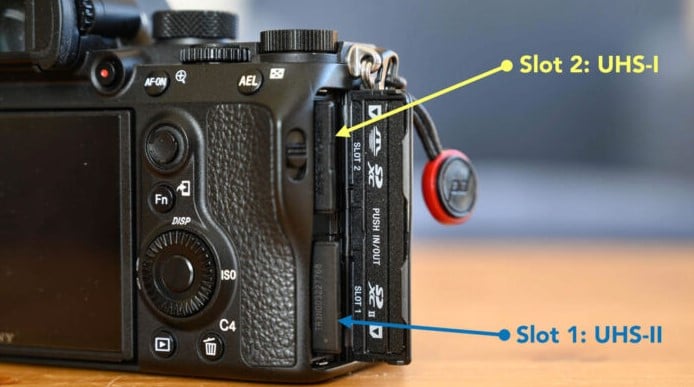
Continuous Shooting
Additionally, Sony’s camera offers 10 fps, while the shooting speed for Canon EOS R is 8 fps. While they may look similar, the difference is significant, especially when shooting high-speed objects. You can be sure to capture moments better with a Sony A7 III than with a Canon EOS R, making it the go-to camera for wildlife and sports photographers. It also helps to point out that the capture rate is twice its predecessor on launch, A7 II, which is quite impressive.
Sensor Comparison
Although slightly lower than Canon’s EOS R, Sony also has an excellent sensor and Bionz X processor features. This is not a surprise, though, given that Sony has been at the top from the onset. Their full-frame A7 series has been the go-to option for photographers to upgrade from bulky DSLRs to more compact models. For Canon R, it’s an improvement from DSLRs but falls short since they don’t have inbuilt image stabilization, and the cropped 4K video isn’t either.
Video Quality
For videographers, the Sony A7 III unit emerges as the better selection again. You can shoot 4K videos at up to 30 fps with the Sony unit. Sony tops this feature with a 4K HDR playback via its Hybrid Log Gamma profile on compatible devices. You also benefit from an enhanced dynamic range of up to 14 EV. The camera also boasts of delivering full HD videos at up to 120 fps.
Autofocus Feature
We also note the Sony A7 III’s impressive autofocus performance. It’s powerful thanks to the 693 detection points with 93 percent of image coverage, coupled with the 425-contrast detection autofocus points. We can’t overlook its Eye AF feature. The incredible AF function lets you shoot perfect portraits, which is crucial when taking continuous shots. It allows your models to freely switch between poses without losing their eye focus.
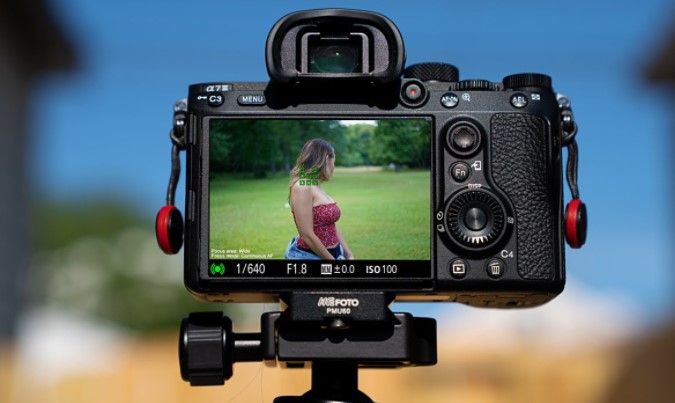
Battery Performance
Sony A7 III also emerges as a winner here thanks to its long battery life. With about 610 shots per full charge, you can be sure to shoot for long hours without worrying about constantly changing the battery.
Low Light Performance
Sony also outwits Canon when shooting in poor lighting conditions thanks to its lower resolution sensor, excellent dynamic range, and low light sensitivity.
Size
Although almost negligible, we have to point out that the Sony A7 III is the most compact of the two. When it comes to carrying on extra weight, every digit counts. Especially when quality is not compromised.
Lens Compatibility
As a photographer, we know the significance of working with a robust selection of lenses. That’s why we selected the Sony A7 III for its incredible compatibility with around 153 lenses.
There you have it. Sony A7 III gives you the cutting-edge features of Sony, but at a more affordable price than the other Sony cameras.
Conclusion
Canon EOS R vs Sony A7III, which is better?
The answer is in the minor details. We recommend you select one that fits your exact needs. Whether you’re a beginner looking for a new camera, an enthusiast looking to upgrade, or a semi-pro looking to switch brands, we’ve got you covered. The Canon EOS R and Sony A7 III are both affordable options.
We hope our comparison has given you a view of the strengths and weaknesses of the two digital cameras to help with your selection.
To recap, the Sony A7 III stands out for its low light performance, higher dynamic range, ISO performance, inbuilt image stability feature, faster fps shooting speed, and good battery life. On the other hand, the Canon EOS R boasts more megapixels, a better focus point, LCD size and resolution, EVF resolution, ergonomics, and price.
